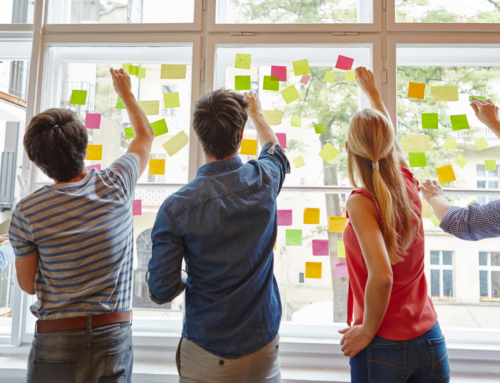Did you know that 1 in 6 children aged five to 16 were identified as having a probable mental health problem in July 2020?
The pandemic has only made the situation worse, with 80% of young people agreeing that it has negatively impacted their mental health, according to the charity Young Minds.
For Michael Crinnion, founder of wellbeing device Luma³ and former teacher, the solution is a simple one.
In the second of our two-part installment (you can read the first part here), we’re catching up with Michael to hear more about his revolutionary wellbeing device and why it should be a mainstream part of the curriculum.
Hello again Michael, please tell us more about your experience of working with young people with mental health challenges?
Before I created the Luma³, I spent a number of years as a design and construction teacher and a school vice principal. I absolutely loved working with young people and came to learn that the pastoral side of teaching was where my real passion lay.
In my first teaching job, I found that a lot of my students were disadvantaged, disengaged boys that meant I was having to do a lot of behaviour management. It became clear that mental health and wellbeing issues were the biggest challenges my students were facing, but I felt that I was falling short on what I could provide for them.
Schools don’t lack effort or willingness to help students with mental health challenges, but there is just no money either within the school or within the wider system to make any meaningful difference.
How can Luma³ solve this problem?
Luma³ was developed through an understanding of the science of stress, it is a physical wellbeing device that uses gentle pulses of colour and light to guide users through conscious breathing techniques. It helps to boost wellbeing by reducing stress and improving sleep.
Proven techniques like mindfulness and conscious breathing should, in my opinion, become a statutory part of early education. If you can teach children that feeling anxious is a completely normal physiological reaction and nothing to be frightened of, then it’s not an overstatement to say that you’d be saving lives.
The most important thing for me is that by having Luma³ in schools, it will play a part in the normalisation of mindfulness. It will teach students that these techniques are not just for “hippies”, and that therapy should be positioned like a treatment – if you had a headache, you would take paracetamol. If you feel stressed, you do some breathing. Both are scientifically proven to work. It’s clear to me that mindfulness should have as high a priority on the curriculum as nutrition and exercise.
Tell us about your ‘10:1’ initiative
For every 10 Luma³ that we sell commercially, one will go free to a school, college or university to support young people’s mental health and wellbeing.
Each will come with a full curriculum pack so that it can be supported and implemented in numerous ways, at no burden to the teaching staff.
Is the Luma³ aimed at a particular age range?
When I was developing Luma³ it was so important to me that it was usable to anyone without any, or very minimal, instructions. Which means that it can be used by children of all ages.
Even at primary school level I can see it being used every time the children come into school. They could sit down and do five minutes of breathing while the teacher gets the board ready for the lesson. It would become as normal for them as taking a register.
I believe that the best way to prepare young minds for the trials and tribulations of life is to help them learn simple, effective self-soothing techniques which they can use for the rest of their lives. There isn’t really any better outcome than that.
mdeducational Foundation owns minority stake shares in Mind Body Goals Ltd who manufacture Luma³ read more.
You can find out more about the work the mdEducational Foundation is doing to support the mental wellbeing of young people here.




